The Columbia Pictures logo symbolizes inspiration. The work of directors, photographers, actors and other filmmakers cannot be done without this inspiration. The emblem symbolizes creative accomplishment. Columbia Pictures stands as an esteemed firm in entertainment which functions as a big distributor and production outlet. His present focus is centered on directing blockbuster films as well as directing independent films and television programs.
Part 1: The beginning of the company
The origin of this famous film company dates back to its predecessor, CBC Film Sales. Founded by the Cohn brothers, the company operated as a family-friendly company with only a few staff members, including producer Joe Brandt. Because this venture did not succeed, it called the company of “corned beef and cabbage.” In 1924, after five years of business difficulties and setbacks, the family behind the company put on the brink of business failure.
Bold Rebranding
Desperate to re-depart, they took a full rebranding with bold decisions. This strategic move has managed to distance itself from previous predicaments, breathe new breath into business, and prevent its demise. It is noteworthy, however, that Columbia Pictures did not immediately succeed as a leader in American film and television, as it is today. In fact, at the beginning of the 20th century, the company was near the bottom of the competition ladder.
Golden Era of Comedy and Success
During this period, the studio found peace in some profitable businesses. Hawks and Capra, Events of One Night, Mr. A film such as “Going to Smith Washington” appeared as an important earner with the comedic work of Three Stooges. These works allowed the company to survive with minimal investment. Fortunate events occurred in the 1940s, bringing life to the studio in distress.
A Strategic Shift
Coincidentally, Harry Cohn found Rita Hayworth, a talented film actress and dancer who became famous for Gilda. Hayworth’s success revitalized the company and pushed profits. Cohn wisely turned a division of the company from animation to television series production. The turning point came in 1962 when David Lean’s big film Laurence of Arabia won four Academy Awards.
Search for Investors
This achievement marked a major milestone for Columbia cinema and paved the way for subsequent Academy Award-winning films. Colombian cinema gradually gained national recognition and worked to become an industry flagship. The 1960s brought great trials to many studios, and Columbia cinema sought investor support during this difficult time. In the 1980s, the Coca-Cola Group acquired the company, but nearly a decade later.
Visual Evolution of Columbia Pictures
In its rich history, the company’s brand promotion and logo development influenced by these extremely important events and variations in fortune, resulting in frequent changes in visual identity. Now, let’s explore the various iconic logos of Columbia Pictures that have colored the screen since its founding.
Part 2: Columbia Pictures Logo Over Time
Like many iconic companies, the company had many distinctive logos over the years. Although all of them left a huge footprint on the company and its viewers, various logos have existed over the years. Some have a complete original logo and others have only improved and edited the previous logo.
1924 – 1925
Before adopting the current name, the film production company known as CBC Film. The only emblem created in 1918 was the CBC, a tribute to the visionary brothers Cone and Joe Blunt. This main insignia, labeled “CBC” in capital letters, firmly cast in a traditional font with delicate decoration at the end of the letter. Beneath it inscribed “Film Sales Corporation,” the elongated decorative glamour of “R” is distinguished.
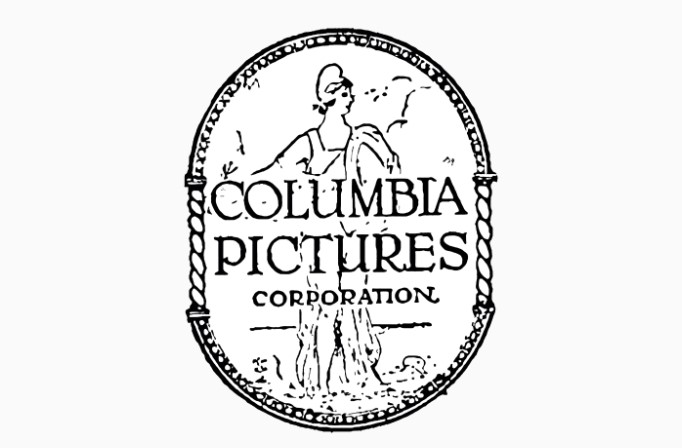
1925 – 1926
In 1925, the Columbia Pictures logo changed greatly with the times. The background changed to a deep black and the outline of the design emphasized, making it bolder and firmer. The symbol mark is circular from the previous shape. The brand name arranged to encircle this round motif from the outside. This revamp not only reflects the contemporary aesthetics of the era, but also emphasizes that the brand’s commitment to progress.
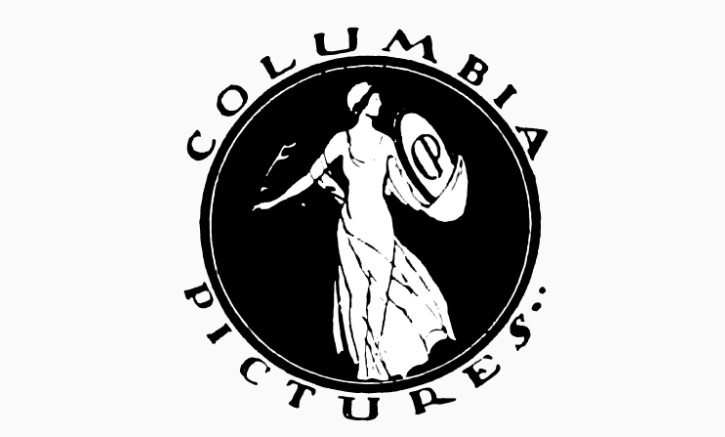
1926 – 1932
The arrival of the Columbia Lady with the light of light was an extremely important event in the company’s branding history. This glowing concept, symbolizing hope, guidance and inspiration, was first introduced in this special Columbia Pictures logo. Over the years, as the company evolved, the symbolic expression of women evolved. The basic essence has been drawn with various nuances and delicacies.
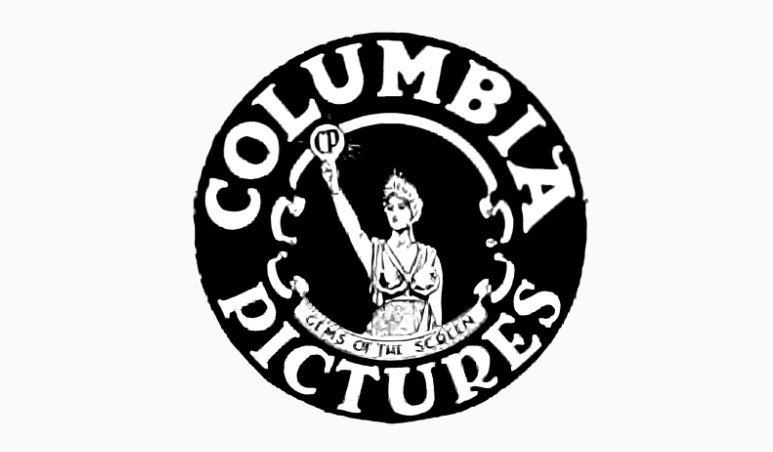
1932 – 1933
In 1932, the Columbia Pictures logo was born again. The new design highlighted the bold shades of crimson, giving it eye-catching vividness. This shade makes the emblem a fresher avant-garde impression, and is complemented by an outline created in detail. The delicate white streaks radiated from the torch of a woman created a dynamic visual effect by drawing a vivid contrast against the background of red.

1933 – 1936
In 1933, the Columbia Pictures logo changed its style and returned to the grayscale color scheme. However, the aesthetic foundation built in 1932 remained intact. By switching to a black and white palette, the emblem became heavier and more sophisticated. These two classical interactions of logo colors bring a dignified presence and casually convey the aura of domination and leadership. The monochromatic approach, seemingly simple, utilized the deep-rooted associations.
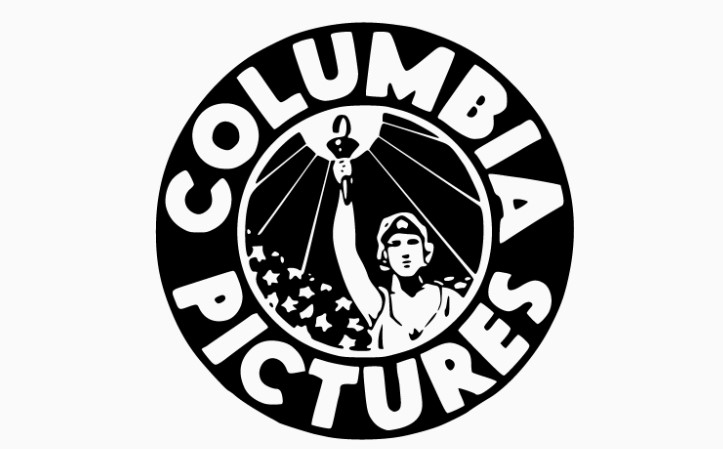
1936 – 1938
In this era, these emblem logos adopts a rectangular form. The letter “Columbia” is on the female silhouette. The vertices of the emblem were engraved with the letters of “Pictures,” at the bottom of which are smaller typefaces. This layout provided a balanced visual appeal that attracted attention to the central person and allowed both character elements to be identified.

1936 – 1993
During this period, the emblem symbolizing the national heritage of the United States (the outline of women holding the torch) became more profound and three-dimensional. The sparkling background that appears to emanate from the torch enhanced the visual appeal and became more memorable than the previous one. This iconic woman was inspired by the real muse actress Evelyn Venable.

1938 – 1945
The expression of a woman holding a torch enlarged to depict her entire form and contained in a circle. This inner ring surrounded by a wider outer ring. In this space separating the concentric circle, the company name artistically divided. The first part gracefully arc with thick capital letters, and the later part placed at the bottom. Both characters expressed in harmonious black fonts, preserving the consistency of size and style.
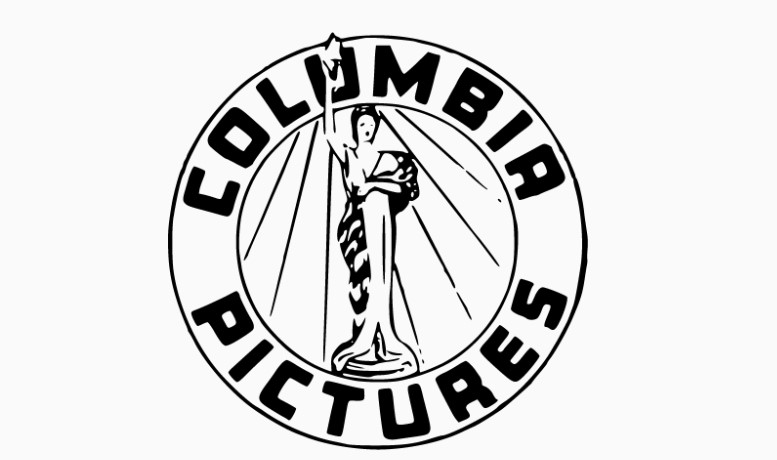
1945 – 1964
Significant modifications made to the emblem. The depiction of a woman sitting on a petite table, created in 1936, underwent complex improvements. Her torch emitted a beam and painted artistically as a ray extending in different lengths and directions. The brand name first descended while swirling from right to left, and soon engraved on a sash wrapping its feet while drawing a graceful arch behind the woman.
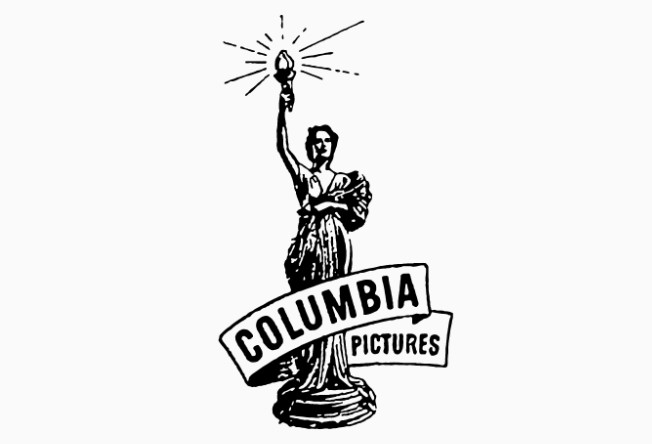
1964 – 1975
Conceived in 1964, the Columbia Pictures logo stood out as a typical minimalist design through the company’s historical timeline. The emblem consists of sophisticated “C” characters, seamlessly integrated with torch motifs. The primary color is pure white, and the contrasting black creates outlines and shadows, giving depth and three-dimensional feel to the flat design. Surrounding this emblem is a delicate square frame with gently curved corners.

1975 – 1981
In 1975, a new and transformative design was introduced for the brand. This design created a visual hierarchy with two striking black word marks. On top of this character element is a semi-circular Columbia Pictures logo harmonizing black and white shades. At the center of this icon is a contemporary interpretation of torches, characterized by intense, angular rays released outward. The whole ensemble has an aura of vibrancy, strength and modern sense.

1981 – 1989
In this era, he was fervently seeking a refreshed identity. The company relentlessly added hands to the emblem. Frankfort Communications’ design followed the iconic woman clutching the torch, but there was a marked change in the light emitted by the torch. This light spread wide behind her, forming a rear light that edged her head and shoulders. This circle, separated by a conical beam of equal distances, emits a gentle blue color and dances vividly on the screen.
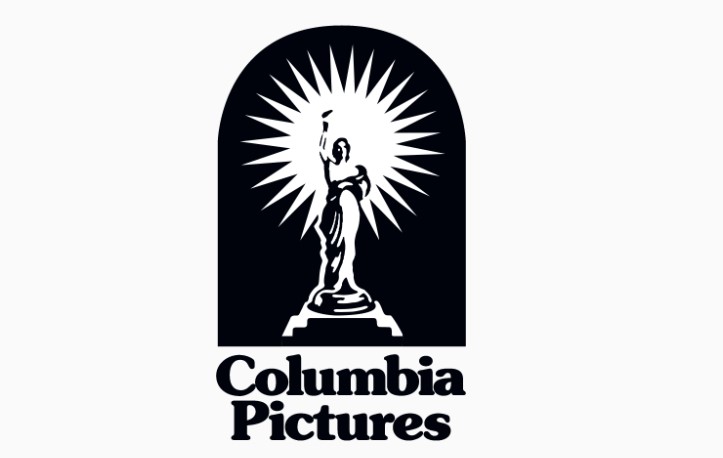
1989 – 1993
Columbia Pictures logo has transformed vividly. The iconic “Lady with the Torch” was painted with bold black lines, and the contrast with the white background was impressive. The dark, rounded graphics surrounding it evoke the essence of radial beams or divergent rays, adding depth and personality to the design. The typography was subtly fine-tuned to make it look modern and good, but the essence of the design familiar from the previous work was maintained.

1992 – 1993
For one year starting in 1992, the Columbia Pictures logo took the icon from the previous design and placed it next to the wordmark on the right. The wordmark consists of a large capital letter of a thick serif logo fonts, occupying two separate rows and matching the height of a woman with a torch icon.

1993 – Today
Today, the modern logo proudly held by Columbia Pictures was formed in 1993. The Columbia Pictures logo boasts an amplified wordmark strategically divided into two layers, with the emblem symbol positioned gracefully on the right. The elements of this typography are made of strict geometric sans-serif typefaces. The square-shaped characters, coupled with the emphasized powerful lines, create an authoritative atmosphere.

Part 3: Key Elements of Columbia Pictures Logo
There are many versions of the logo so far, each with a unique aspect, but some things in common.
1. The Lady with a Torch
If you have heard the name of Columbia Pictures logo, you must have seen the iconic female graphics with torches. This emblem is commonly associated with this brand and stands out to fans of this company. This logo stands out from many familiar parts, making a difference and making the viewer feel friendly and elegant.
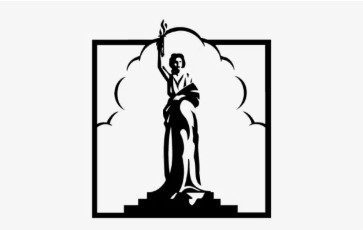
2. Black & White Coloring
The Columbia Pictures logo has spent most of its life in black and white. The sharp contrast and timeless monochrome color palette demonstrate the brand’s long history and contemporary sensibility. However, the brand also uses the full artist painting of women with torches as its logo.

3. Empty Expression
Whether the beam is released from the torch or the subtle clouds of today, the background behind the woman with the torch is always important to the logo. From the beginning, it is part of the design to distribute women against the background of the sky, and it will not be gone.
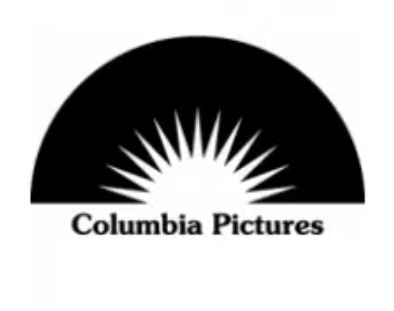
Part 4: The Story Behind the Photo Shoot
It all began when Anderson’s friend Michael J. Dees, a talented illustrator who designed 16 commemorative stamps for the U.S. Postal Service, asked the photographer to take reference photographs for a painting. At the time, she never imagined how symbolic the work would eventually be. Anderson tells Peta Pixel “I made a soft light that emphasized all the folds of the material and flattened the model.
Face Behind the Iconic Logo
At the time, Anderson worked for the New Orleans newspaper Times Picayun. Dees, who needed a model to pose for the Torch Lady, decided to ask Jenny Joseph, a photographer colleague of the paper, to model. On the day of the shoot, Dees brought warm croissants bought at his favorite French Quarter bakery and props that could be a reference to the image. There were sheets, cloth, flags, and a small lamp with a light bulb.
Part 5: Portrait of the Torch Lady, which became the iconic logo
Anderson delighted with the images she created that day. This photographer has taken many reference photos for Dees over the years, including book covers and commissioned portraits. However, nothing was comparable to the film’s logo.
Artist Maintained Accuracy
Comparing the original photographs by Anderson with the finished logo artwork by Death, you can see how faithful the artist was to the original portrait. The details are very similar to the images of the camera, such as the arrangement of the right-hand fingers holding lamps and torches, a blue cloth slightly below the woman’s shoulder, and a box or cloth spilling over the steps below.
Part 6: A long and successful career in photography
Anderson’s first camera was in college, and never looked back. When she worked as a staff photographer at Times Picayune for 28 years, she is happy that she was part of the glorious era of print journalism. In 2006, Hurricane Katrina awarded the Pulitzer Prize for Public Service.
Most Challenging Shot
Anderson remains an active photographer, spending time on commercial photography, portraits, several weddings, and decades of personal projects on New Orleans culture. When asked what was the most challenging photograph he ever taken, he replied that it taken in St. Paul’s Church shortly after Hurricane Katrina. “Because this is part of the school that my children attended, and I spent every morning with the students in the chapel,” says the photographer.
A Symbolic Photograph
And what is the “most amazing use of press photos” Anderson has ever done? It is a photo of a state legislator being hanged by a police officer during a protest about racist monuments. This 1993 photograph was part of a year-long project on race relations in New Orleans. Twenty-three years later, in 2016, this image became a poster and held high during the Black Lives Matter march.
Part 7: An Apartment Studio with Simple Props
“After I left the dining table and turned the living room into a studio, I set a speckled gray background. I put a few boxes on the floor so that the cloth drips. I put a polaroid back on Hasselblad’s camera and started taking tests. ” In the old film era, in particular, 120 films were still prevalent, such as the early. Many Hasselblad photographers, including Anderson, knocked off Polaroid to see the 21/4×21/4 proof or show it to their clients.
Experimenting with Colors and Textures
Jenny wrapped in white sheets. “I filmed the national flag on sheets and blue cloth on sheets. in the end, i chose a blue cloth. The material carefully arranged. The cloth folds emphasized and the lighting placed so that the catch light hit Jenny’s eyes. We started shooting and studying hours of fun and creative fusion.
Part 8: Arvin AI – Revolutionizing Logo Analysis and Design
Logos play a significant role in a company’s success. Companies can develop superior logos through the combination of artificial intelligence technology provided by Arvin AI. The application examines logo patterns before supplying beneficial data which suggests modification possibilities. Companies gain the ability to stay up-to-date through Arvin AI’s design trend forecast capabilities. With its intelligent recommendations, businesses can design logos that are both contemporary and memorable.
Key Features of Arvin AI
- Advanced Logo Analysis: Arvin AI analyzes different logos and provides analysis on why they succeed.
- AI-Driven Design Suggestions: The software provides design suggestions for improving logos to make them appealing and memorable.
- Trend Prediction: Arvin AI analyzes market trends to help companies remain competitive in branding.
- Logo Performance Analysis: It analyzes how a logo functions in the long term and suggests improvement.
- Brand Consistency Analysis: Arvin AI ensures a company’s logo aligns with its overall branding strategy.
Steps to Use Arvin AI for making Logo
Step 1: Visit the Panda Logo Design Page
Open your browser and navigate to the Columbia Pictures logo design page on Arvin AI to begin creating your unique Columbia Pictures logo.

Step 2: Enter Your Business Details
Provide essential information about your business, including the name and category. This helps the AI generate logo concepts that align with your brand.

Step 3: Select Your Industry
Choose your industry from the list provided. This step helps narrow down logo style options, allowing the AI to tailor designs specifically for your sector.

Step 4: Choose Your Preferred Style
Browse through the available styles and pick one that reflects your brand’s image. If none appeal to you, simply skip this step and let the AI suggest a design based on its default inspiration.

Step 5: Review Logo Ideas
The AI will generate several Columbia Pictures logo options based on the details you provided. Take your time to explore the designs that resonate with your brand’s message.

Step 6: Customize Your Logo
Personalize your selected design by adjusting elements like colors, fonts, icons, and layout to match your brand’s aesthetic.

Step 7: Download Your Logo
Once you’re happy with your custom Columbia Pictures logo, download it in formats such as PNG or SVG. These formats ensure your logo works seamlessly across websites, social media, and printed materials.

Conclusion
The Columbia Pictures logo stands among the most recognizable images within the film world. Although it has changed considerably over a long period of time, there is always something invariant in the image. The woman with the torch is the most symbolic to this day. The brand needs her to stay as its spokesperson because her power and divine appearance represent the triumphs of the brand. A good logo makes a brand rememberable. Columbia Pictures retained the Torch Lady to be true to tradition without losing touch. With tools such as Arvin AI, companies can create logos that are timeless and contemporary.
FAQs
Who is the Torch Lady in the Columbia Pictures logo?
The Torch Lady is Columbia, an older America figure. She has been re-styled a couple of times to fit modern tastes.
When was the Columbia Pictures logo first introduced?
The original look of the Columbia Pictures logo in the 1920s has been updated many times since, becoming more elaborate and sophisticated.
Why hasn’t Columbia Pictures drastically changed its logo?
Columbia Pictures is conscious of its history, and the Torch Lady has been a faithful symbol. Continuity of the logo as recognizable as possible guarantees the strength of the brand.
How can Arvin AI help in logo design and branding?
Through Arvin AI users receive AI-based analysis together with historical pattern analysis as well as design recommendations.


